The selection with Linux is huge, there is no current version as with Windows, but several variants. We help with the selection, briefly introduce the most exciting systems and show the differences.
What is linux What a distri?
With Windows, things are simple: the manufacturer Microsoft is bringing out a new version and at times there is still the predecessor - that was the choice. Things are a little different with Linux. Because there is no such thing as "Linux". Strictly speaking, the whole thing should be called GNU / Linux anyway: What is commonly called Linux consists of a kernel, Linux, and a number of standard tools, the GNU tools. But let's leave that aside and, as usual, just talk about Linux. You will find these core elements in all Linuxs, more precisely Linux distributions, or distris for short. Since the Linux basis is open source software, everyone can build and distribute their own system - hence the name Distri.
And that's exactly where the big differences lie: Who is developing the system? What goes into the system? How is it published? What additional tools does it include? And what exactly does the desktop look like? Some distris are mainly published by the companies behind them, such as Ubuntu from Canonical or Red Hat Enterprise Linux from Red Hat. Other distributions are completely community-supported, especially Debian. Most large distris also give their Linux systems their own tools for everything to do with the system - in particular what is known under Windows as the "system control" is solved by each distri in its own way. The "large" application programs such as Office (LibreOffice) or image processing (Gimp) can of course be found everywhere. It is also important how seriously the projects take the idea of freedom:Where Debian only relies on free, open source software by default, Ubuntu also uses non-free software, for example graphics card drivers or multimedia codecs. The update policies also differ: some are published on fixed dates, and some updated packages are continuously stored in the so-called repositories. Speaking of which: Every distri has a corresponding "repo", from which programs can be easily installed via the package management - Debian comes to over 50,000 packages.Each distri has a corresponding "repo", from which programs can be easily installed via the package management - Debian comes to over 50,000 packages.Each distri has a corresponding "repo", from which programs can be easily installed via the package management - Debian comes to over 50,000 packages.
The main question for most home users is: what does the desktop look like? With Windows, the OS and desktop are inextricably linked; with Linux, the entire desktop environment is basically just an application program that can be installed and exchanged at will. All systems have a standard desktop, but it can be changed. The best example: Ubuntu is also available as Lubuntu, Kubuntu and Xubuntu, which stands for the standard desktops LXDE, KDE and XFCE. The project teams change other details here and there, but basically you could just set up Ubuntu and then install LXDE, KDE (now Plasma) and XFCE - and then select the desired system at startup.
Not all aspects are important to everyone, but this gives you a basis for selection. If the technology is left out, the distris differ from the user's point of view in questions such as: How lean is the system? How comfortable? How free? How well documented? A small selection follows - there are hundreds of Linux distris! - the most exciting linux..
Debian
Debian has to be mentioned first at this point, simply because it is the basis for a number of other distris, including the two most popular desktop Linux Ubuntu and Mint. The system has been around since 1993, has an extremely large number of packages in the repos, and is completely managed by the community. The CD standard desktop is the slim XFCE, actually only intended for weakly computing devices, DVD images are available for Gnome and KDE, among others - others are supported. Debian attaches great importance to stability and security and is therefore extremely popular with Linux connoisseurs and professional users. Linux beginners will often face the problem that stable, secure software comes from the repo, but often old versions. It often happens that this or that doesn't want to work,because basically outdated software is running. New releases come every year.
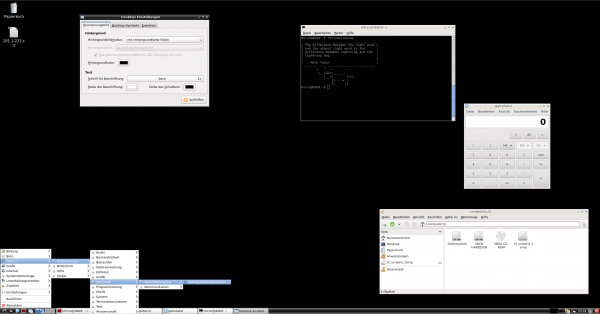 Debian is the starting point for the most popular distris.
Debian is the starting point for the most popular distris. Ubuntu
You've probably heard of Ubuntu. It's the most popular Linux distribution out there. Not just limited to servers, it's also the most popular choice for Linux desktops. It's easy to use, offers a good user experience, and comes pre-installed with the essential tools to get you off to a good start. Ubuntu managed to "simplify" the Linux experience years ago, and that's why it's still so popular, even though several impressive Linux distributions are currently available.
Ubuntu is based on Debian and brought Linux to the private computer in the first place in the first place. If you come from Windows and don't want to deal with the computer itself, but just want to use it, you will get your money's worth here: Up-to-date software, many packages, simple system controls and, above all, a community that helps beginners in particular - the tone of Ubuntu -Forums, for example, are much more suitable for laypeople than in Debian forums. Ubuntu now relies on the Gnome desktop in a "modern" variant without the usual start menu. With the standard desktop, Ubuntu is a bit slower and more resource-hungry than a bare Debian. The biggest "catch" with Ubuntu: Behind this is Canonical, a company that at times hardly behaves better than Microsoft;for example, advertising was once integrated into the start menu and the previous standard desktop Unity was a horror to say the least..
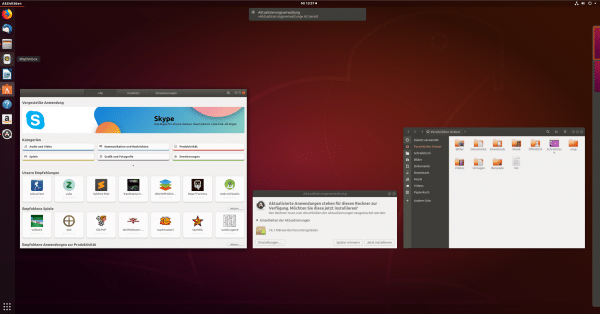 Ubuntu has long been the standard on the desktop.
Ubuntu has long been the standard on the desktop. Mint
Linux Mint is arguably the best Ubuntu-based Linux distribution out there for beginners. Yes, it is based on Ubuntu, so you can expect the same benefits as Ubuntu. Instead of the GNOME desktop, however, it offers various desktop environments such as Cinnamon, Xfce and MATE. In fact, Linux Mint does some things better than Ubuntu. It's not just limited to the familiar user interface, which is a bonus for Windows users. It offers impressive performance with minimal hardware requirements, especially with the Xfce or MATE desktop environment. Also, it uses the same software repository as Ubuntu. So you don't have to worry about the availability of the software to be installed.
Mint has some good tools of its own (update manager, USB formatter, desktop settings etc.) and is available in two desktop versions: Mint's own Cinnamon is based on Gnome 3, alternatively there is Mate based on Gnome 2. Also Mint relies on a traditional update cycle and current software packages. For you as the end user, one thing is of particular interest: You get a complete, fully configured system, including multimedia and complete application equipment. As of today, Mint is probably the best Linux variant for the average consumer to start with. By the way: There are also versions based on Debian instead of Ubuntu, which are correspondingly more fixed, but also more incomplete and less user-friendly - more interesting for connoisseurs.
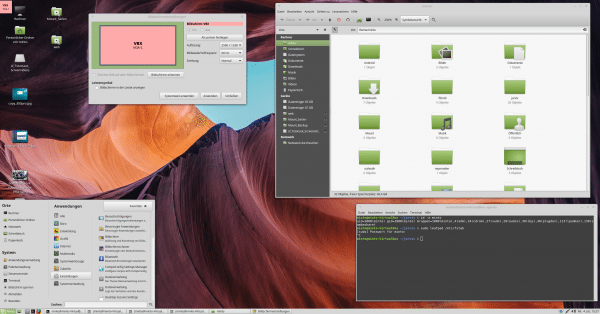 Linux Mint is slowly overtaking Ubuntu and is even ahead in many areas.
Linux Mint is slowly overtaking Ubuntu and is even ahead in many areas. openSUSE
With openSUSE there is finally a system that is not based on Debian. Originally "operated" by Novell and SUSE Linux (and developed in-house), openSUSE is now also community-based, albeit sponsored by SUSE, and somewhat forgotten - just 10 years ago openSUSE was often the first choice on private computers. One of the biggest differences to the previous Linux distributions: Installable software does not come in DEB packages, but as RPM - most providers make both versions of their software available. The standard desktop is traditionally KDE, but now there is also Gnome. openSUSE has always been pretty user-friendly and, above all, equipped with a huge number of programs. There are new versions about every 8 months, and recently there is also a version with openSUSE Tumbleweed,that relies on rolling releases. This means that updated packages are imported as updates as quickly as possible, instead of first in a new version. Like the Ubuntu / Debian-based systems, openSUSE is well documented - but is likely to lag a little behind..
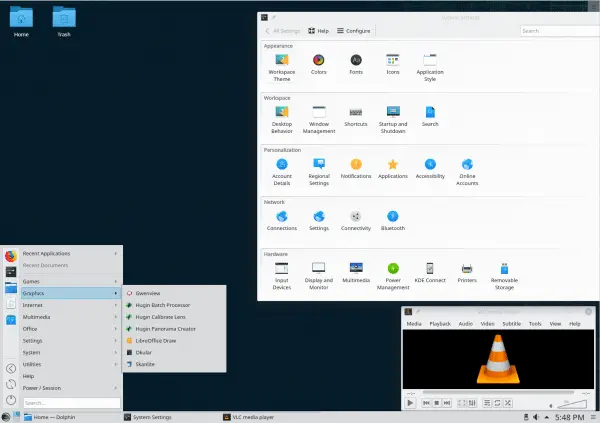 openSUSE, here Tumbleweed, has always been very, very well equipped - but also correspondingly full.
openSUSE, here Tumbleweed, has always been very, very well equipped - but also correspondingly full. Puppy Linux
Puppy Linux is a real specialist and again an Ubuntu derivative. Puppy relies entirely on performance and is the first choice on computers that have actually been used a long time ago. What is really special: Puppy is mainly started from external data carriers and then loads itself completely into the main memory - in contrast to an Ubuntu started from CD, a Puppy CD can be removed after the start! Puppy can even run from a multisession DVD and write changes to the DVD again - features that are intended for a special purpose. Puppy is unlikely to be installed as a standard system at home, but carrying it as an emergency system on a USB key fob is a wonderful thing!
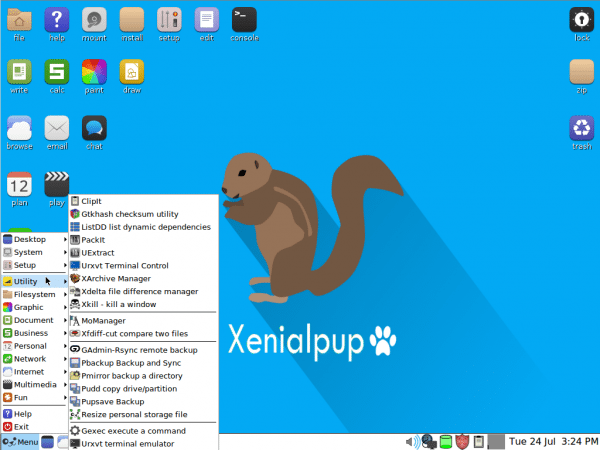 Puppy is extremely slim and fast - and yet fully equipped.
Puppy is extremely slim and fast - and yet fully equipped. Arch Linux
Arch Linux is more old school than many of the other Linux distributions here. It is designed to be flexible, lightweight, minimalist, and "keep it simple". Keeping it simple doesn't mean Arch offers tons of graphical utilities and automatic configuration scripts to help you set up your system. Instead, it means Arch forego these things and avoid them.
You are responsible for properly configuring your system and installing the software you like. Arch does not provide an official graphical interface for its package manager or complex graphical configuration tools. Instead, it offers neat configuration files that are easy to edit. The installation disc takes you to a terminal where you have to enter the appropriate commands to configure your system, partition your hard drives and install the operating system yourself.
Arch uses a "rolling release" model, which means that each installation image is just a snapshot of the current software. Every part of the software will be updated over time without you having to switch to a new "version"need to update from Arch.
Which should it be now?
Linux newcomers and those switching to Windows are initially best off with Mint, Ubuntu and openSUSE - in the opinion of the author of these lines in precisely this order. The choice of a desktop environment is certainly more important - and that makes it highly subjective. Mint Cinnamon perhaps brings the best, most modern user experience here, Mint Mate is more conventional and a bit more fixed; If you prefer Windows 7 to Windows 10, you will soon be happy with Mate. If you want a system that is as stable as possible, who do not constantly install / try out new software and get by with standard tools such as Office, browser, image processing and so on, you can confidently set up a Debian - but maybe not as your first Linux at all.
There are several other systems that are large and interesting enough to take a look, such as Slackware (as close to Unix as possible) or Fedora (as up-to-date as possible) as general distris. There are also a number of special distributions for specific purposes, such as Ubuntu Studio for multimedia tasks, Kali Linux for security specialists and hackers, Raspbian for the Raspberry Pi or even Tor-ramdisk for operating a TOR server in the main memory.
And if you want to learn Linux the hardcore way, there is only one right solution: LFS. Linux From Scratch is a "distribution" that only exists as a manual! With these instructions you can build your own complete Linux system from scratch, exclusively from freely available source code.